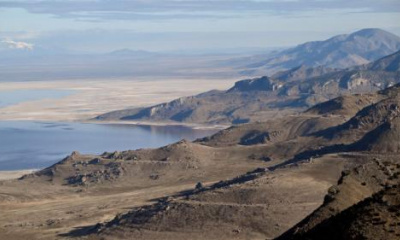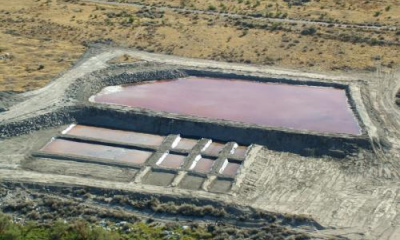Utahns are already choking on dangerous lake dust, their open letter notes.
Days before the Utah Legislature is set to convene, doctors have signed a warning about the public health consequences if the Great Salt Lake continues to shrivel.
The community open letter was spearheaded by Utah Physicians for a Healthy Environment (UPHE), one of the plaintiffs behind a lawsuit calling on the state to do more to reverse the lake’s decline. A drying lake and its lakebed dust threaten the health of more than 2 million people living on the Wasatch Front, the letter notes. The lake already generates around 15 dust storms a year, although scientists are not entirely able to track dust events due to the lake’s size and the lack of an extensive monitoring network.
“As we take an oath to do no harm, so should our lawmakers,” the letter cautions. “We urge the State of Utah to implement whatever policies are necessary to avert this looming disaster.”
Potential impacts from breathing dust pollution include inflammation, lung diseases, heart conditions, pregnancy complications and more.
“These health hazards are compounded,” the letter notes, “by the fact that Great Salt Lake’s dust contains numerous toxic heavy metals like mercury, arsenic, and lead, and toxic chemicals like pesticides.”
It appears anyone can sign the open letter, although UPHE representatives said they compared signatories with their own roster of members and supporters, and confirmed at least 300 of the 365 signatures came from medical professionals. The organization did not say what criteria they used to define a medical professional.
The Great Salt Lake hit record lows in 2021 and 2022. Utah lawmakers and policymakers have enacted numerous measures in to reverse that trend. They invested millions into conservation measures, wetland restoration and securing water supplies for the lake. They enabled water rights holders to lease water for the lake’s benefit without losing their rights. They filled in the breach in a railroad causeway bisecting the lake to keep the saltier northern half from further spiking salinity concentrations in the southern half. And they appointed a Great Salt Lake czar to oversee the rescue plan and streamline policy implementation.
Still, even after a record-breaking snowpack in 2023, the lake is only a few feet higher from its all-time low. It needs to rise by about 7 feet to reach a sustainable elevation, which likely will take several years even with the most draconian conservation measures.
A news release issued by UPHE and Earthjustice, the legal organization representing plaintiffs in the Great Salt Lake lawsuit, said the open letter was delivered to lawmakers Tuesday. The General Session begins on Tuesday, Jan. 16.
“We simply cannot allow the lake to continue at its diminished state,” wrote Brian Moench, UPHE president, in the release, “or worse, completely disappear.”








